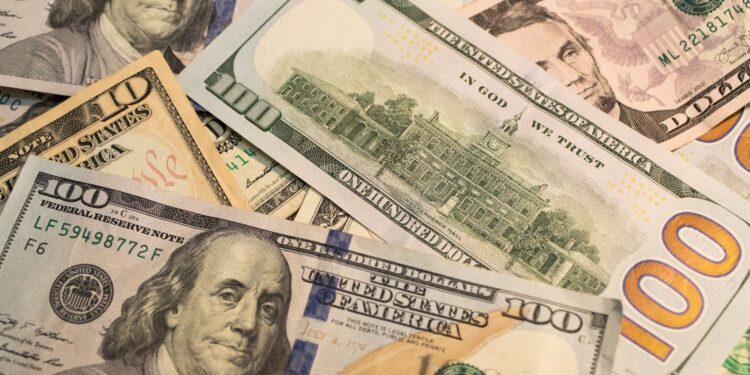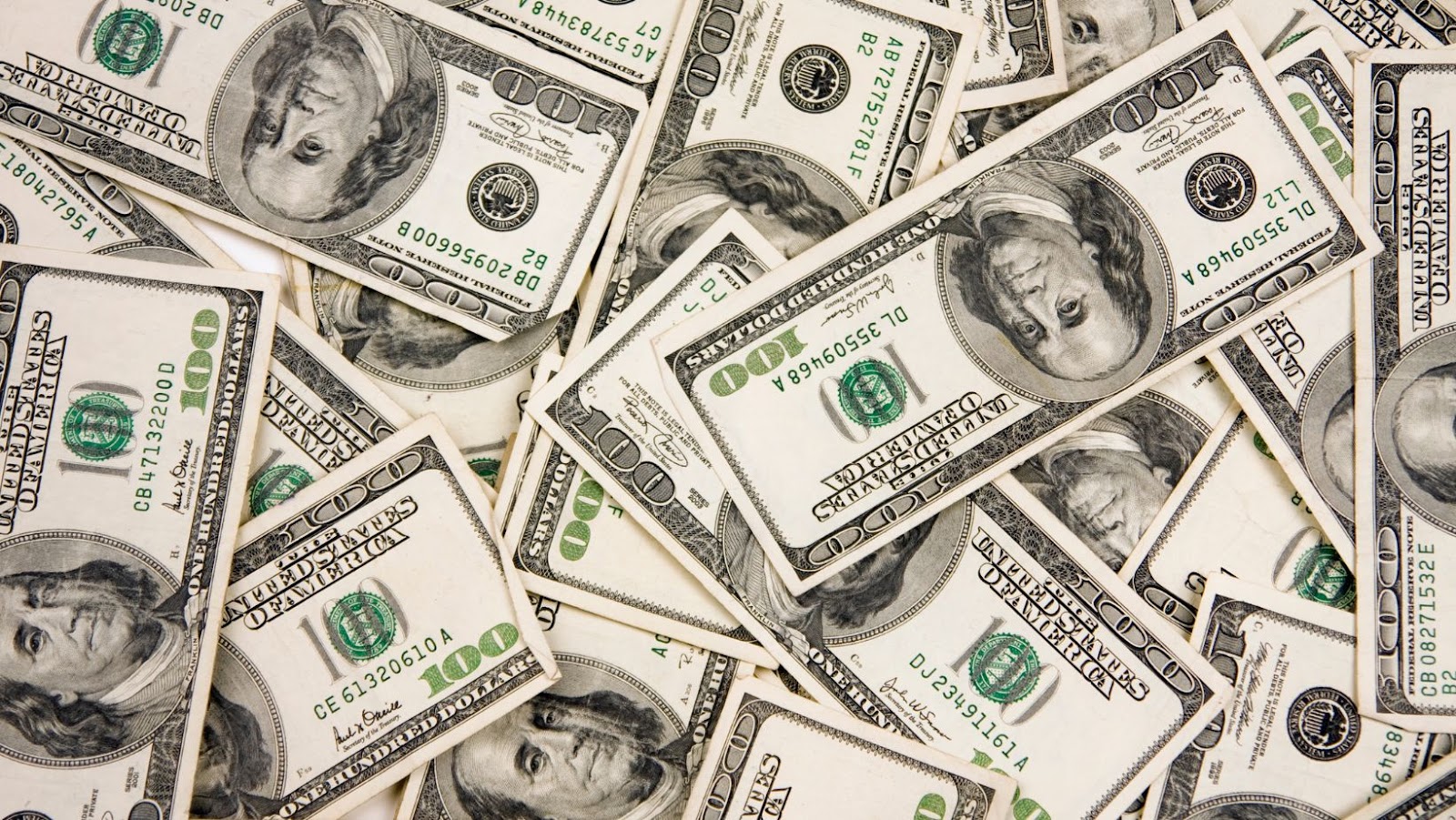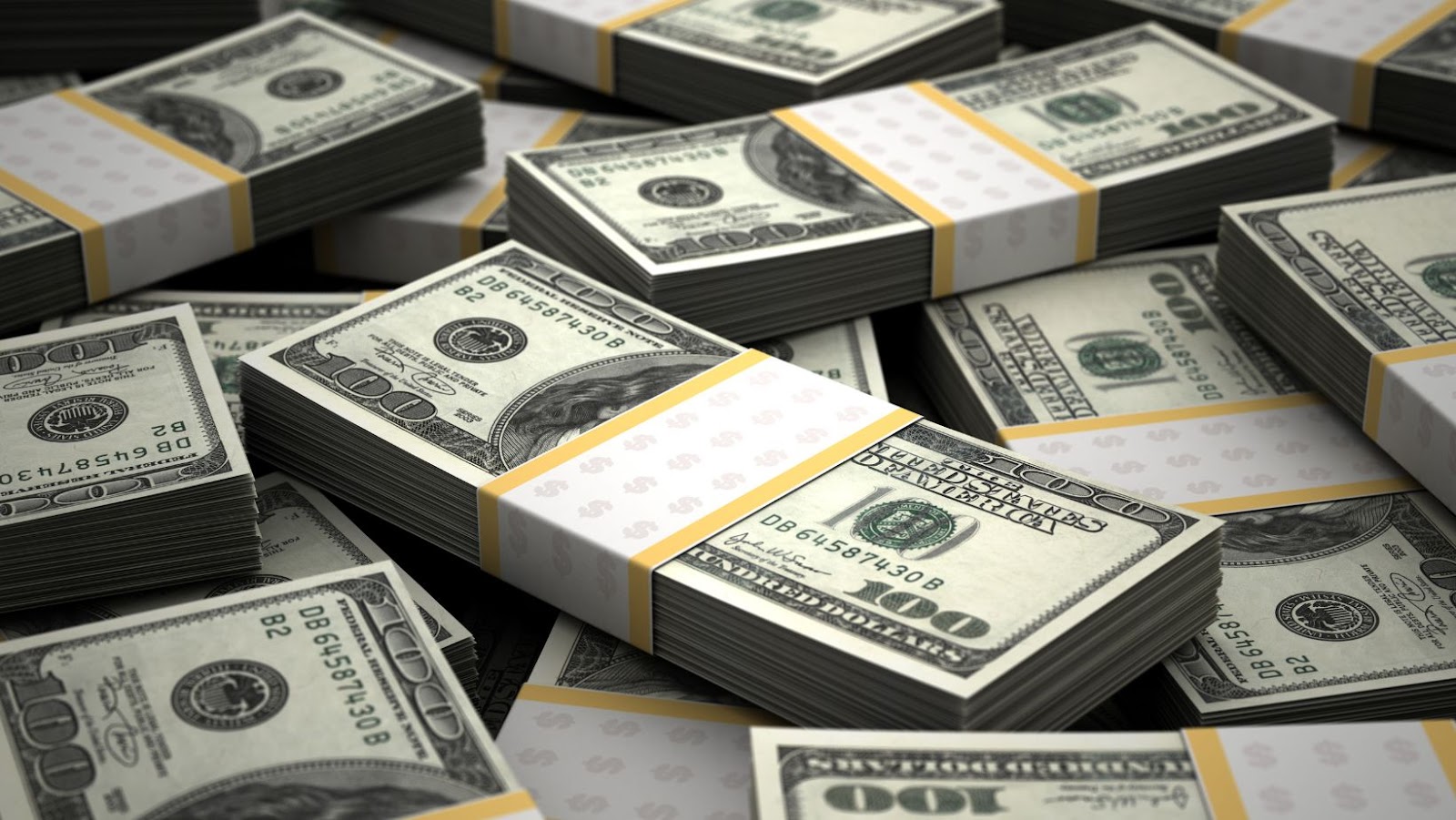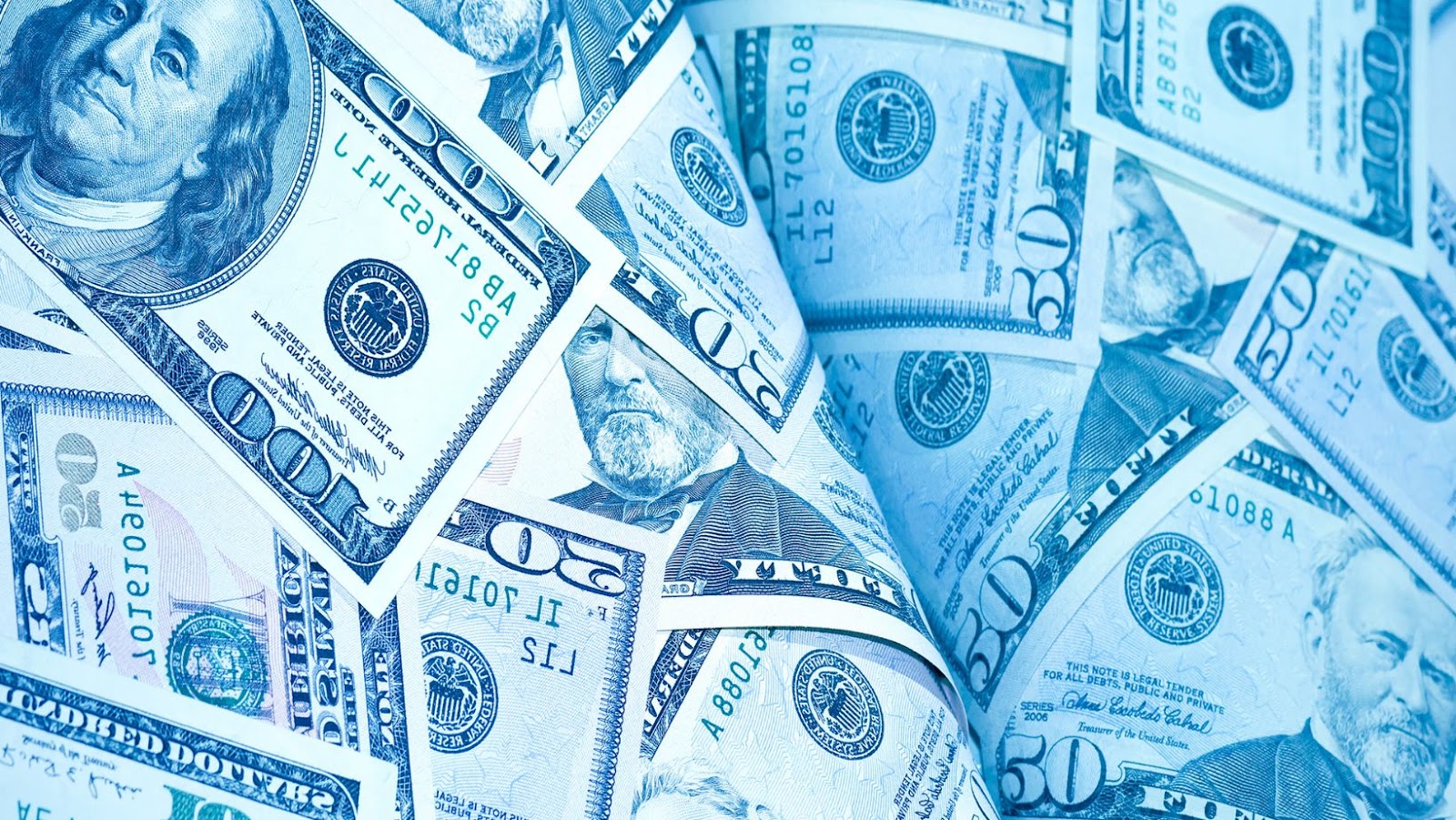The official dollar price and the blue dollar transaction rate have a considerable effect on each other. Understanding how the official dollar price affects the blue dollar rate is key to navigating the currency markets.
This section will help explain the impact of official dollar prices on Argentine citizens and vice versa.
What is the official dollar price?
The official dollar price is the rate at which the national government sets the value of their currency against other foreign currencies. In contrast, the “blue dollar” or “black market” price is the unofficial rate at which the currency is bought and sold on the parallel market outside of government control.
The official dollar price affects the blue dollar in several ways. A government-supported official rate tends to make the parallel market more active as people seek a better value for their currency than official government rates. Factors such as inflation, political instability, and economic trends are also determinants of the blue dollar price. The wider the gap between the official and blue dollar rates, the greater the incentives for individuals to participate in the informal foreign exchange market.
The use of the blue dollar is associated with greater risks and uncertainties but can be more profitable in specific scenarios.
What is the blue dollar?
The Blue Dollar refers to the unofficial, parallel market for foreign currency in Argentina, which operates outside the government’s official exchange rate system. This market is illegal but widely used, primarily because of the significant difference between the official and unofficial exchange rates.
The official exchange rate is the one set by the government and recognized by banks and most businesses. On the other hand, the Blue Dollar rate is set by supply and demand in informal settings, such as street vendors and unregistered currency exchange houses.
The official dollar price affects the Blue Dollar market because it creates a significant gap between the official exchange rate and the Blue Dollar exchange rate. This gap is due to the inflation rate and instability of the Argentine economy. As the official exchange rate becomes more unfavourable, more people turn to the Blue Dollar as a way to purchase foreign currency at a better rate.
Pro Tip: It’s important to note that using the Blue Dollar market comes with risks and legal consequences, so it’s always advisable to use authorised exchange channels.
Cotización Dólar Oficial Dólar Blue Hoy
The official dollar price and the blue dollar price represent two different exchange rates for the US dollar in Argentina, and both are used interchangeably to set prices, wages, and loans.
The official exchange rate is set by the government and is intended for importing and exporting goods, while the blue exchange rate is determined by supply and demand in the black market and is used for unofficial transactions.
The main reason why there’s a difference in the dollar price is that the official exchange rate is artificially fixed at a lower value than the actual market value of the US dollar. This leads to a shortage of foreign currency and makes it difficult for individuals and businesses to acquire the necessary dollars to import goods or services from abroad.
As a result, the blue dollar has emerged as an alternative currency, with a higher value than the official dollar, as it reflects the reality of supply and demand for dollars in Argentina. The difference in the dollar price also affects inflation and the overall economic situation in the country, making it important to keep track of both rates.
Pro tip: If you’re travelling to Argentina, it’s always a good idea to research and compare the official and blue dollar rates to get the best value for your money.
How the Official Dollar Price Affects the Blue Dollar
The official dollar price set by Buenos Aires is an important factor that determines the value of the “Blue Dollar”, or the unofficial currency market in Argentina. The official dollar price has a direct effect on the market and the value of the Blue Dollar, which is why it is so important.
In this article, we will discuss how the official dollar price affects the Blue Dollar and what it means for those who buy and sell currency in the unofficial market.
How the Central Bank sets the official dollar price
The Central Bank determines the official dollar price by setting a fixed value for the Argentine peso against the US dollar, which is updated daily based on market demand and supply.
The official dollar price affects the Blue Dollar, which is the unofficial exchange rate used by citizens due to the country’s multiple currency exchange system.
When the official dollar price is too high or too low, it can cause a disparity between the official and unofficial exchange rates. This can create a situation where the Blue Dollar becomes more attractive to citizens or businesses.
For example, if the official dollar price is too high, it becomes more profitable for individuals to purchase USD at the official rate and sell them on the black market for a higher price. This leads to a devaluation of the peso and can cause economic instability.
On the other hand, when the official dollar price is lower than the market exchange rate, individuals and businesses tend to buy dollars at the lower official rate and sell them on the black market for a higher profit, leading to a shortage of dollars in the market.
In conclusion, it’s crucial for the Central Bank to set the right official dollar price to maintain stability and prevent economic instability in the country.
How the official dollar price affects the economy
The official dollar price and its effect on the economy cannot be understated, especially in countries with a dual currency system, such as Argentina. The official dollar price refers to the value of the US dollar set by the central bank or government, while the “blue” or “black” dollar refers to the unofficial exchange rate used in parallel markets.
A higher official dollar price typically means a weaker local currency, which can influence prices of imports, exports, and domestic production. This, in turn, can result in inflation and reduced purchasing power for citizens.
The blue dollar, on the other hand, can fluctuate wildly and is influenced by supply and demand factors, including political and economic instability. While it can offer quick profits to savvy traders, it can also contribute to overall uncertainty in the market.
In summary, the official dollar price and its fluctuations can have far-reaching effects on a country’s economy, including inflation, import/export prices, and overall purchasing power.
How the official dollar price affects the blue dollar
The official dollar price and the blue dollar rate are interdependent, and the former directly impacts the latter.
The official dollar rate refers to the exchange rate established by the central bank of a particular country. This rate is determined by various factors, including the country’s economic stability, inflation, and global exchange rates.
The blue dollar rate, on the other hand, is an unofficial exchange rate used for currency transactions outside the official market. The blue dollar rate is typically higher than the official rate and is prevalent in countries with strict currency controls or high inflation.
When the official dollar rate goes up, the demand for the blue dollar increases as people look for alternative ways to exchange their currency. This increase in demand drives up the price of the blue dollar, often resulting in a wide discrepancy between the official and unofficial exchange rates.
On the other hand, when the official dollar rate goes down, the demand for the blue dollar decreases, and the price typically falls as well.
Effects of the Blue Dollar on the Economy
The blue dollar, also known as the illegal dollar rate, is a way to circumvent currency restrictions placed by the government of a country and take advantage of the free market. But how does the official dollar price affect the blue dollar and in turn, the economy?
This article will explore the various ways in which the official dollar rate affects the blue dollar and how it affects the economy.
Why is there a market for the blue dollar?
The Blue Dollar, the name given to the unofficial dollar exchange rate in Argentina, has emerged due to a combination of economic and political factors.
One of the primary reasons for the demand for the Blue Dollar is the strict regulations imposed by the Argentine government on the official exchange rate. The government has imposed strict controls on foreign currency exchanges and limited citizens’ rights to buy and sell foreign currencies. These restrictions have given rise to a parallel market for the Blue Dollar, which operates outside of the government’s control.
The Blue Dollar’s effects on the economy are significant. Many businesses and individuals use the Blue Dollar as a way to protect their investments from inflation and fluctuations in the official exchange rate. However, the Blue Dollar also fuels inflation, as prices of goods and services are often linked to the unofficial rate, contributing to rapid inflation.
While the use of the Blue Dollar provides a short-term solution for many, it has long-term consequences that impact the country’s financial stability as a whole.
How does the blue dollar affect businesses?
The Blue Dollar, also known as the “dólar blue” in Argentina, refers to the unofficial exchange rate for the US Dollar, which is higher than the official rate set by the Central Bank of Argentina. This black market rate has a significant impact on businesses within the country.
The high value of the Blue Dollar makes imported goods more expensive, as the cost of purchasing foreign currency to acquire these goods also increases. This affects businesses that rely on imported goods, either as part of their product or as part of their business operations.
Furthermore, businesses that earn their revenue in Argentinian pesos may struggle to compete with international companies whose local currency is stronger than the Argentinian Peso. This may lead to a decrease in investments in Argentinian companies, particularly if their revenue is threatened by the unstable economy.
Overall, the Blue Dollar directly impacts the economy and businesses in Argentina, particularly those that depend on imported goods and/or struggle to earn revenue in the nation’s local currency.
Pro tip: Understanding the impact of the Blue Dollar on the economy is not only important for businesses in Argentina but also for international businesses looking to invest in the country.
How does the blue dollar affect consumers?
The Blue dollar is a term used in Argentina to describe the unofficial market for exchanging US dollars at a rate higher than what is set by the government. This phenomenon has both positive and negative effects on consumers in the country.
Positive effects: Consumers who have access to the blue dollar can take advantage of a more favourable exchange rate to purchase goods and services, including imported goods.
Negative effects: The blue dollar can contribute to inflation and reduce the availability of dollars in the official market. This, in turn, can impact the purchasing power of citizens who do not have access to the blue dollar market. Additionally, the exchange of US dollars on the black market is illegal and can be risky for consumers who fall victim to scams or buy counterfeit currency.
Pro tip: If you’re planning to exchange US dollars in Argentina, it’s important to research the current exchange rate and use reputable exchange services to avoid scams.
Factors that Affect the Blue Dollar
The Blue Dollar, or informal exchange rate market, is known as the “unofficial” exchange rate market of Argentina. This exchange rate market is heavily influenced by the official exchange rate set by the Bank of Argentina, and the policies of the government.
In this article, we will explore the factors that affect the Blue Dollar, and how the official dollar rate affects it.
Government Policies
Government policies play a significant role in determining the exchange rate of the blue dollar and how it is affected by the official dollar price. The exchange rate is determined by various factors, including inflation rates, balance of trade, and interest rates.
If the government implements expansionary policies, such as increasing the money supply, it can lead to inflationary pressures and a devaluation of the official currency. This can increase demand for the blue dollar, driving up its price.
Conversely, if the government implements contractionary policies, such as decreasing the money supply, it can lead to a stronger official currency and a decrease in the demand for the blue dollar, lowering its price.
Government policies also affect the black market where the blue dollar is traded, as restrictions on foreign currency exchanges can increase demand for the blue dollar, leading to higher prices.
Pro tip: Keep an eye on government policies that affect the economy to understand how they may impact the exchange rate of the blue dollar.
Inflation and Interest Rates
Inflation and interest rates are two crucial factors that directly impact the blue-dollar rate and affect the economy of a country in multiple ways.
The Blue Dollar rate reflects a country’s currency rate in the black market, which is always higher than the official rate. Factors such as inflation and increasing interest rates contribute significantly to the increase of the Blue Dollar rate.
Inflation occurs when the prices of goods and services increase gradually over time. It reduces the purchasing power of consumers and devalues the currency, creating a demand for foreign currency that allows Black Market traders to sell dollars at a higher price.
On the other hand, interest rates refer to the cost of borrowing or the reward for saving money. When interest rates increase, consumers tend to save more money, which reduces the amount of money circulating in the economy, consequently increasing the Blue Dollar rate.
In conclusion, inflation and interest rates have a profound impact on the economy and the Blue Dollar rate. Efforts should be made to control these factors to prevent the economy from going haywire.
Pro tip – Inflation can be controlled by maintaining supply-demand equilibrium, while interest rates can be controlled by government policies such as tax cuts and subsidies.
Market Speculation and Supply and Demand
Market speculation and supply and demand are two crucial factors that affect the value of the Blue Dollar. The Blue Dollar is the unofficial exchange rate that is used in Argentina, and it is primarily influenced by the demand for US dollars in the country.
Market speculation comes into play when investors and traders try to predict the future value of the US dollar and make decisions based on their forecasts. The more uncertainty there is about the currency’s future value, the more speculation there will be in the market, and this can cause fluctuations in the blue dollar value.
On the other hand, the supply and demand of US dollars are significant determinants of the blue dollar price. When there is limited supply and high demand for US dollars, the blue dollar’s value goes up. Conversely, when the supply of US dollars is high, and demand is low, the blue dollar’s value falls.
Pro Tip: Keep an eye on market news and trends to stay up to date on the factors influencing the Blue Dollar’s value.
Managing the Blue Dollar
With the fluctuating official dollar price, the blue dollar has become an important tool for hedging against currency volatility. Through this tool, businesses and organisations can effectively manage the impact of changes in the official dollar price.
In this section, we’ll take a look at how the official dollar price affects the blue dollar and how it impacts businesses.
Measures taken by the Government
The government has taken several measures to manage the blue dollar and its impact on the official dollar price.
Some of these measures include:
1. Imposing currency controls: The government has imposed restrictions on the purchase and use of foreign currencies to limit the demand for US dollars and prevent capital flight.
2. Increasing interest rates: The government has raised interest rates to incentivize holding onto pesos rather than buying US dollars.
3. Introducing new taxes: The government has introduced tax measures to discourage the purchase of US dollars and encourage the circulation of pesos.
4. Negotiating with international creditors: The government has been renegotiating its foreign debt with creditors to ease the pressure on the Argentine peso and increase investor confidence.
These measures aim to reduce the demand for US dollars, stabilise the official dollar price, and manage the impact of the blue dollar on the Argentine economy.
Strategies for businesses and investors
The Blue Dollar economy is a parallel currency market in Argentina, resulting from the difference between the official exchange rate and the black market rate. Here are some strategies that businesses and investors can use to manage the Blue Dollar:
1. Monitor the official exchange rate and the Blue Dollar rate to identify potential arbitrage opportunities.
2. Diversify your currency holdings to manage exchange rate risk, reducing the impact of exchange rate volatility on your business or investments.
3. Explore the possibility of hedging currency risk using financial instruments to offset any losses incurred due to exchange rate fluctuations.
4. Consider purchasing Blue Dollars through official channels, as the rate tends to be higher than the black market rate, minimising the potential risks associated with currency substitution.
Pro tip: To stay on top of the Blue Dollar’s latest updates, subscribe to financial news services, research papers, and economic reports to gain deeper insights into the Blue Dollar’s implications for business and investment.
Future of the blue dollar and its impact on the economy
The Blue Dollar, also known as the “Dolar Blue” in Argentina, is the parallel currency market in the country, where people can buy or sell US dollars at a rate that’s higher than the official exchange rate. However, due to the government’s recent measures to control the exchange rate and combat inflation, the future of the Blue Dollar remains uncertain, and its impact on the country’s economy is yet to be fully understood.
The government’s efforts to tighten control over the Blue Dollar have resulted in a decreasing number of transactions on the parallel market, which could lead to a stabilising effect on the economy by reducing the demand for black market dollars. However, this could also lead to a shortage of US dollars in the country, as people resort to other currencies or means to get hold of foreign currency.
Overall, the future of the Blue Dollar could have a significant impact on the country’s economy, and it remains to be seen how the government’s measures will affect the parallel market in the long term.



















